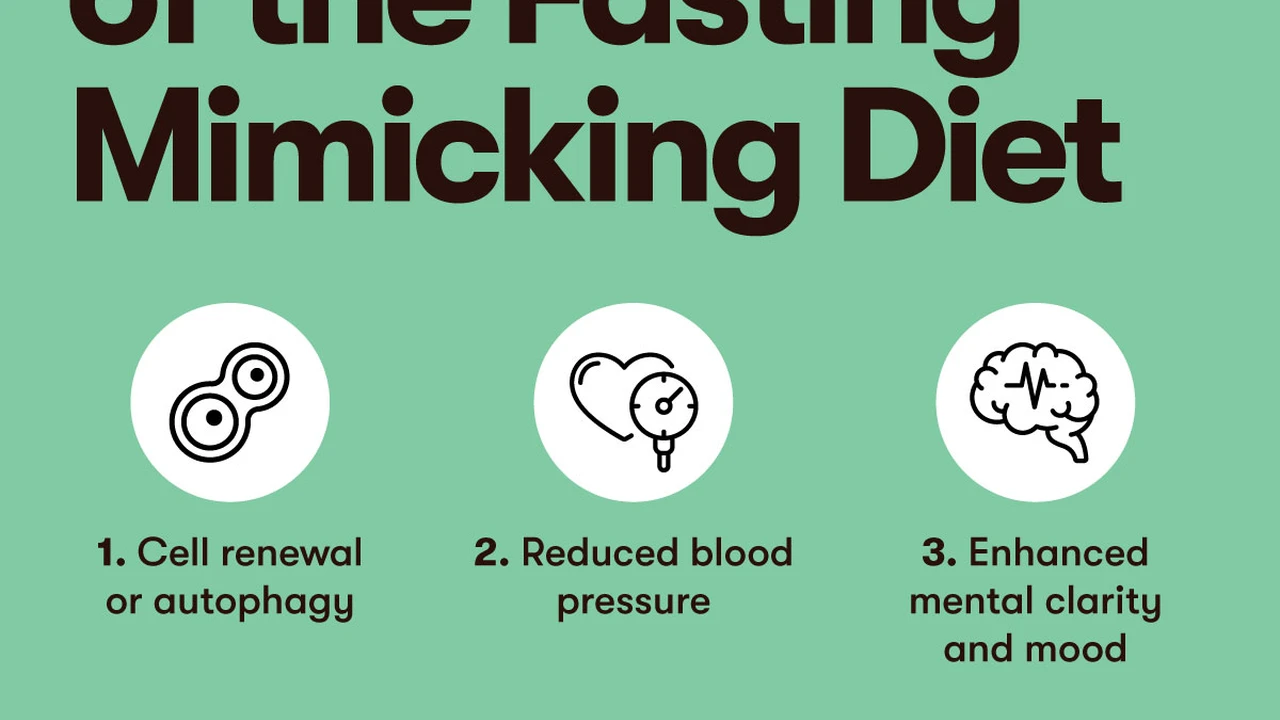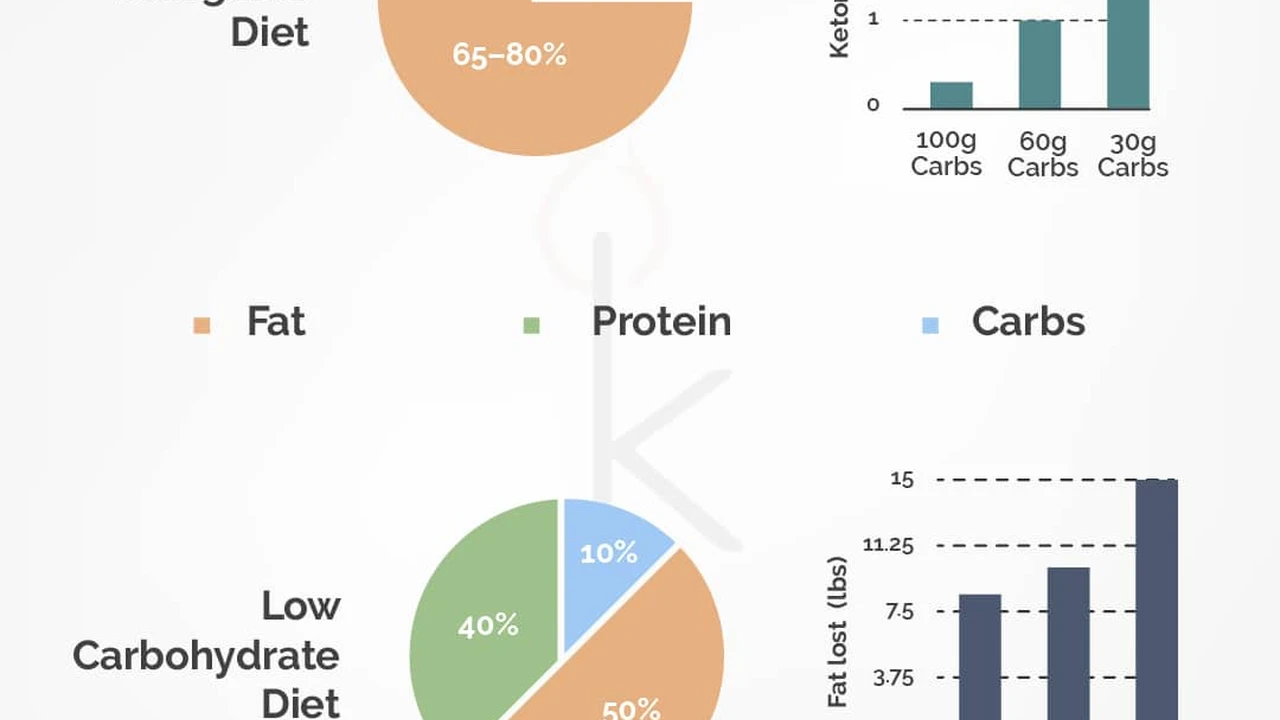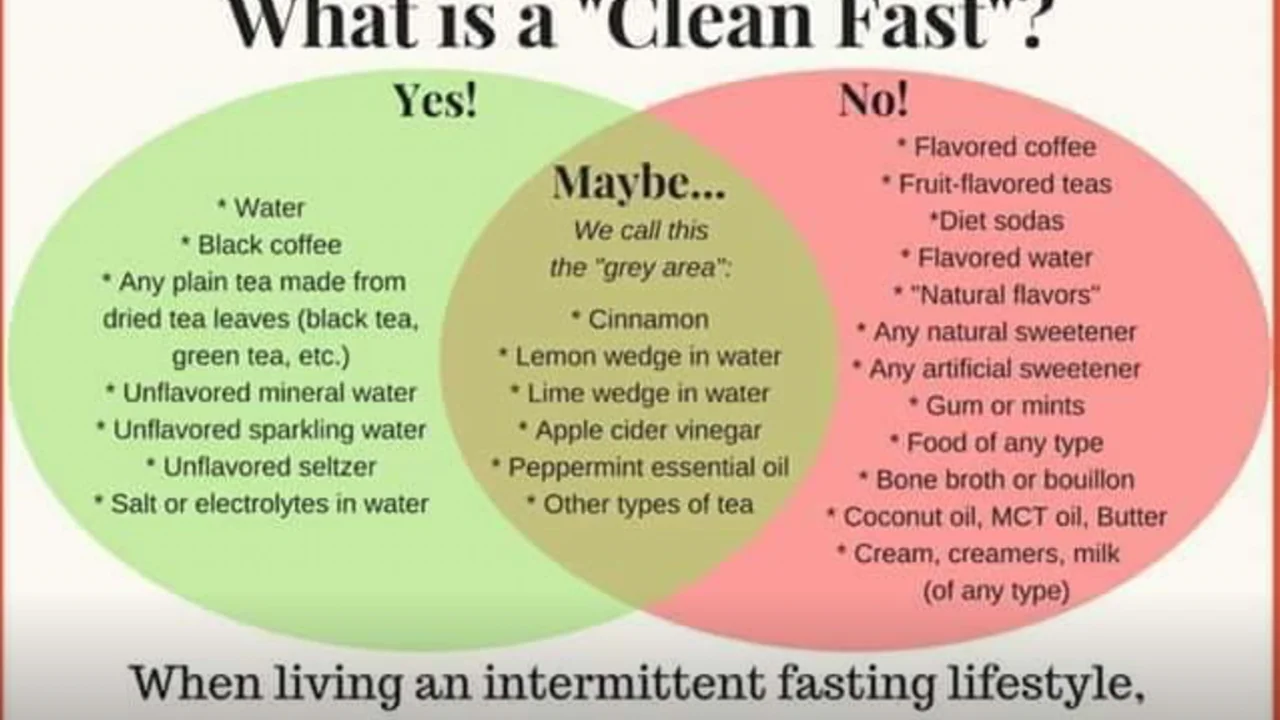Comparing Fasting Mimicking Diet and Calorie Restriction
Understand the anti-aging benefits of the Fasting Mimicking Diet versus calorie restriction. Explore pathways to longevity.

Comparing Fasting Mimicking Diet and Calorie Restriction for Longevity
Hey everyone! Today, we're diving deep into two of the most talked-about strategies in the longevity space: the Fasting Mimicking Diet (FMD) and Calorie Restriction (CR). Both have shown incredible promise in extending lifespan and healthspan, but they go about it in different ways. Let's break down what they are, how they work, their benefits, potential downsides, and even some practical tips and product recommendations to help you decide which path might be right for you.
What is Calorie Restriction and How Does it Work for Longevity?
Calorie Restriction, often abbreviated as CR, is exactly what it sounds like: consistently reducing your daily caloric intake below your usual consumption, without leading to malnutrition. We're talking about a sustained, long-term reduction, typically ranging from 10% to 40% below what you'd normally eat to maintain your weight. This isn't about crash dieting; it's a lifestyle change aimed at optimizing health and extending life.
The Science Behind Calorie Restriction and Cellular Health
So, how does cutting calories lead to a longer life? The science is fascinating. When you reduce your caloric intake, your body shifts from a growth-promoting state to a maintenance and repair state. This triggers several key cellular pathways associated with longevity:
- mTOR Pathway Inhibition: mTOR (mammalian Target of Rapamycin) is a central regulator of cell growth, proliferation, and metabolism. While essential for growth, overactivation of mTOR is linked to aging and age-related diseases. CR helps to downregulate mTOR, promoting cellular repair processes like autophagy.
- Autophagy Activation: Autophagy, meaning 'self-eating,' is your body's natural cellular recycling program. It's how cells clean out damaged components, misfolded proteins, and dysfunctional organelles. CR significantly boosts autophagy, leading to healthier, more efficient cells.
- Sirtuin Activation: Sirtuins are a family of proteins that play crucial roles in cellular health, DNA repair, and metabolism. CR activates sirtuins, particularly SIRT1, which helps protect against cellular damage and inflammation.
- Reduced Oxidative Stress: By lowering metabolic rate and reducing the production of reactive oxygen species (ROS), CR can decrease oxidative stress, a major contributor to cellular aging.
- Improved Insulin Sensitivity: CR often leads to better insulin sensitivity, which is vital for metabolic health and reducing the risk of type 2 diabetes, a disease strongly linked to accelerated aging.
Practical Aspects of Implementing Calorie Restriction
Implementing CR isn't easy. It requires discipline and careful planning to ensure you're still getting all essential nutrients. Here are some considerations:
- Nutrient Density: Focus on nutrient-dense foods. Every calorie counts, so make sure you're getting maximum vitamins, minerals, and phytonutrients from your reduced intake. Think leafy greens, lean proteins, healthy fats, and whole grains.
- Gradual Reduction: Don't just slash your calories overnight. Gradually reduce your intake over weeks or months to allow your body to adapt.
- Monitoring: It's crucial to monitor your weight, energy levels, and overall health. Working with a healthcare professional or a registered dietitian can be very beneficial to ensure you're doing it safely and effectively.
- Potential Challenges: Hunger, fatigue, cold intolerance, and social challenges (eating differently from friends and family) are common hurdles.
Understanding the Fasting Mimicking Diet and Its Anti-Aging Mechanisms
The Fasting Mimicking Diet (FMD) is a relatively newer approach, popularized by Dr. Valter Longo and his team at the University of Southern California. Unlike continuous calorie restriction, FMD involves short, periodic cycles (typically 5 days) of very low-calorie, plant-based eating, designed to trick your body into thinking it's fasting, while still providing some nourishment. The goal is to reap the benefits of prolonged fasting without the complete deprivation.
How FMD Triggers Cellular Rejuvenation and Longevity Pathways
The magic of FMD lies in its ability to activate similar longevity pathways as prolonged water-only fasting, but in a more manageable way:
- Autophagy and Cellular Regeneration: During the FMD cycle, your body enters a state of deep autophagy, clearing out old and damaged cells. Once you refeed, your body then enters a regenerative phase, producing new, healthy cells. This 'cleanse and rebuild' cycle is a powerful anti-aging mechanism.
- Stem Cell Activation: Research suggests FMD can promote stem cell regeneration, particularly in the immune system, leading to a more robust and youthful immune response.
- Reduced IGF-1 Levels: Insulin-like Growth Factor 1 (IGF-1) is a hormone that promotes growth but is also linked to accelerated aging and increased cancer risk when chronically elevated. FMD significantly lowers IGF-1 levels during the fasting period.
- Metabolic Reset: FMD can improve metabolic markers like blood glucose, insulin sensitivity, and cholesterol levels, contributing to overall metabolic health and reduced risk of age-related diseases.
- Inflammation Reduction: Many users report reduced inflammation after FMD cycles, which is crucial for combating chronic diseases and aging.
The ProLon Fasting Mimicking Diet Kit: A Popular Option
The most well-known and scientifically validated FMD program is the ProLon Fasting Mimicking Diet kit. This 5-day program provides all the pre-portioned, plant-based meals, snacks, and supplements you need for the cycle. It's designed to be low in calories, sugars, and proteins, but high in healthy fats, to optimize the fasting-mimicking effect.
What's in the ProLon Kit and How to Use It
A typical ProLon kit includes:
- Nutrient Bars: For sustained energy.
- Soups: Various flavors, providing warmth and satiety.
- Snacks: Olives, kale crackers, etc.
- Drinks: Herbal teas, L-Drink (glycerol-based drink to protect lean body mass).
- Supplements: Vitamins and minerals to prevent deficiencies.
The daily caloric intake on ProLon ranges from approximately 1100 calories on Day 1 to around 750 calories on Days 2-5. You simply follow the instructions for each day, consuming the provided foods. It's recommended to do a ProLon cycle 3-4 times a year for optimal anti-aging benefits, though some people do it more or less frequently based on their health goals and doctor's advice.
ProLon Pricing and Availability
ProLon kits are available directly from their website (prolonfast.com) and through various health practitioners. A single 5-day kit typically costs around $180-$250 USD, depending on promotions and subscription options. While it might seem pricey, it covers all your food for five days and is backed by extensive research.
Comparing FMD and CR: Which is Right for Your Longevity Journey?
Now that we've explored both, let's put them head-to-head. Both FMD and CR aim to activate similar longevity pathways, but their approaches and practical implications differ significantly.
Key Differences and Similarities in Longevity Mechanisms
- Consistency vs. Periodicity: CR is a continuous, daily reduction in calories. FMD is periodic, involving short cycles of very low-calorie intake followed by periods of normal eating.
- Intensity: During the FMD cycle, the caloric restriction is much more severe than typical CR, leading to a more pronounced 'fasting' state.
- Autophagy Activation: Both activate autophagy, but FMD is designed to induce a very strong autophagic response during the fasting period, followed by a regenerative phase. CR induces a more sustained, lower-level autophagy.
- Sustainability: CR can be challenging to sustain long-term for many people due to constant hunger or social limitations. FMD might be more sustainable for some because it's only for 5 days at a time, allowing for normal eating in between cycles.
- Research: Both have a strong scientific basis, with CR having a longer history of research in various organisms, including some human studies. FMD, while newer, has robust clinical trials specifically on its human application and benefits.
Benefits and Downsides of Each Approach for Anti-Aging
Calorie Restriction Benefits:
- Proven Longevity: Extensive research in various organisms (yeast, worms, flies, rodents, primates) shows CR extends lifespan.
- Metabolic Health: Consistently improves insulin sensitivity, blood glucose, and lipid profiles.
- Reduced Disease Risk: Linked to lower risk of chronic diseases like heart disease, diabetes, and some cancers.
- Cost-Effective: Doesn't require special products, just mindful eating.
Calorie Restriction Downsides:
- Difficulty Sustaining: Constant hunger, fatigue, and social challenges can make it hard to stick to.
- Nutrient Deficiencies: Risk of not getting enough essential nutrients if not carefully planned.
- Muscle Loss: Potential for lean muscle mass loss if protein intake isn't adequate.
- Cold Intolerance: Many CR practitioners report feeling colder.
Fasting Mimicking Diet Benefits:
- Manageable Cycles: Easier to commit to 5 days than continuous restriction.
- Strong Autophagy & Regeneration: Induces a powerful cellular reset.
- Stem Cell Activation: Promotes regeneration of various cell types, including immune cells.
- Metabolic Improvements: Significant improvements in metabolic markers after cycles.
- Weight Management: Can lead to healthy weight loss, particularly visceral fat.
- Convenience (ProLon): The kit makes it easy to follow without meal planning.
Fasting Mimicking Diet Downsides:
- Cost (ProLon): The pre-packaged kit can be expensive.
- Temporary Hunger: You will experience hunger during the 5-day cycle.
- Limited Food Choices: You're restricted to the provided foods or very specific homemade options.
- Not for Everyone: Not suitable for pregnant/nursing women, individuals with certain medical conditions, or those underweight. Always consult a doctor.
Practical Considerations and Product Recommendations for Your Longevity Strategy
Whether you lean towards CR or FMD, or even a combination, here are some practical tips and product recommendations to support your journey.
Supplements to Support Fasting and Calorie Restriction
While whole foods are paramount, certain supplements can complement your efforts, especially during periods of reduced intake or to enhance specific pathways.
- Electrolytes: Crucial for both CR and FMD, especially if you're reducing food intake significantly. Brands like LMNT Recharge (around $40 for 30 sticks) or Redmond Re-Lyte (around $35 for 30 servings) offer balanced electrolyte profiles without added sugars. Use them to prevent headaches, fatigue, and muscle cramps.
- Magnesium: Many people are deficient. Magnesium plays a role in over 300 enzymatic reactions, including energy production and sleep. Consider Thorne Research Magnesium Bisglycinate (around $25 for 60 capsules) for good absorption.
- Omega-3 Fatty Acids: Important for reducing inflammation and supporting brain health. Look for high-quality fish oil like Nordic Naturals Ultimate Omega (around $45 for 120 soft gels) or a plant-based algal oil if you're vegan.
- Multivitamin/Mineral: A good quality multivitamin can act as an insurance policy, especially during CR, to ensure you're not missing micronutrients. Thorne Research Basic Nutrients 2/Day (around $30 for 60 capsules) is a solid choice.
- Berberine: Can help with glucose metabolism and insulin sensitivity, which is beneficial for both CR and FMD. Thorne Research Berberine (around $35 for 60 capsules) is a reputable option.
- Resveratrol: A sirtuin activator, often found in red wine, that can mimic some of the effects of CR. Pure Encapsulations Resveratrol (around $40 for 60 capsules) is a good brand.
Tools and Apps for Tracking and Support
Staying on track with CR or FMD can be challenging, but technology can help.
- MyFitnessPal (Free with Premium options): Excellent for tracking calorie and macronutrient intake for CR. It has a vast food database and barcode scanner.
- Cronometer (Free with Gold options): More detailed than MyFitnessPal, offering micronutrient tracking, which is crucial for ensuring nutrient density during CR.
- Zero Fasting App (Free with Premium options): While primarily for intermittent fasting, it can be useful for tracking your FMD cycles and reminding you of your fasting windows.
- Kitchen Scale: Essential for accurate portion control when practicing CR. A simple digital kitchen scale like the OXO Good Grips Food Scale (around $50) is invaluable.
Lifestyle Adjustments to Complement Your Strategy
Beyond diet, other lifestyle factors significantly impact longevity and can enhance the benefits of CR or FMD.
- Regular Exercise: Combines synergistically with dietary interventions to improve metabolic health, maintain muscle mass, and reduce inflammation. Aim for a mix of strength training and cardiovascular exercise.
- Quality Sleep: Poor sleep can negate many benefits of healthy eating. Prioritize 7-9 hours of quality sleep per night. Consider tools like a Whoop Strap (subscription-based, around $30/month) or Oura Ring (around $300) for detailed sleep tracking and recovery insights.
- Stress Management: Chronic stress elevates cortisol, which can counteract longevity pathways. Incorporate practices like meditation (apps like Calm or Headspace, around $70/year), yoga, or spending time in nature.
- Hydration: Often overlooked, but adequate water intake is vital for all cellular processes.
Making an Informed Decision for Your Longevity Path
Ultimately, the choice between Calorie Restriction and the Fasting Mimicking Diet, or even incorporating elements of both, depends on your individual health goals, lifestyle, and what you can realistically sustain long-term. There's no one-size-fits-all answer.
If you're someone who thrives on routine and can meticulously plan your meals, CR might be a powerful tool. It offers continuous benefits and can be very cost-effective. However, it demands significant discipline and attention to nutrient intake to avoid deficiencies.
If you prefer a more structured, periodic approach that allows for periods of normal eating, FMD (especially with a kit like ProLon) could be a great fit. It provides a powerful cellular reset without the constant deprivation of CR, and the pre-packaged nature simplifies adherence. The cost is a consideration, but for many, the convenience and proven benefits outweigh it.
Many people also find success by combining elements: perhaps practicing a milder form of CR most days, and then incorporating FMD cycles a few times a year for a deeper cellular cleanse. This hybrid approach might offer the best of both worlds.
Before embarking on any significant dietary change, especially those aimed at longevity, it's absolutely crucial to consult with a healthcare professional. They can help assess your current health status, identify any potential risks, and guide you towards the safest and most effective strategy for your unique body and goals. Remember, longevity is a marathon, not a sprint, and consistency is key.
:max_bytes(150000):strip_icc()/277019-baked-pork-chops-with-cream-of-mushroom-soup-DDMFS-beauty-4x3-BG-7505-5762b731cf30447d9cbbbbbf387beafa.jpg)






